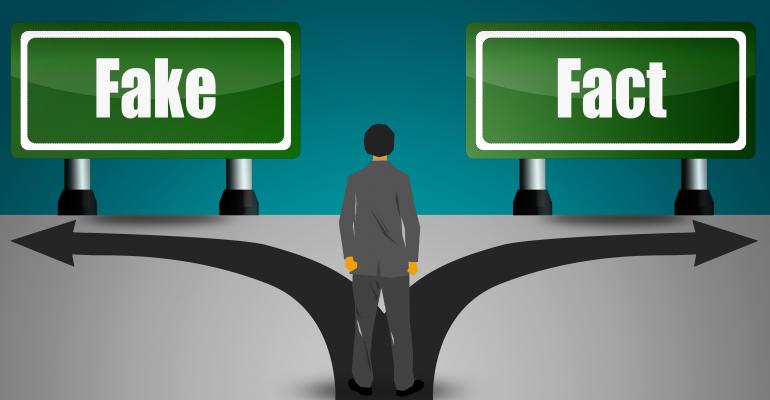Steve Tengler is moderating “The Ultimate User Experience” session at the May 9 WardsAuto Interiors Conference
Mark Twain quoted Disraeli in his autobiography: “There are three kinds of lies: lies, damn lies and statistics.” If you want a long career as an automotive user experience (AUX) designer, you need to embrace this. Many times your recommendations and associated presentations will be somewhere near lies. Believe it or not, your audience sometimes wants misleading truths. Knowing where and when to use them makes all the difference.
When to Create Misleading Truths
“Facts are stubborn, but statistics are more pliable,” Mark Twain says. These are words to live by. At the first meeting of my team on a project, one of my direct reports said, “Welcome to the Land of 1,001 Opinions.” That’s when I had an epiphany: the only way to win is to play with data.
Over a thousand opinions is a lot of data. But what my team member meant was management believes that because they are human, and they factor, they can do human-factors design. To avoid too much influence from management opinions, I needed customer data to support our decisions.
But here’s the rub: In automotive, getting usability or satisfaction data can be expensive, if not impossible. What if the user interface is for a crash-avoidance system? Most corporate lawyers are pesky in that way: they won’t let you potentially crash a vehicle with a customer in it. And even if it isn’t safety-related, getting something created and installed and then recruiting subjects representing the appropriate demographics is expensive.
Depending on the test, even a cupholder can be distracting and skew results, so using a closed course for testing is even more costly. No Chief Engineer will provide a UX designer that kind of budget. Instead, either the inmates will run the asylum, or the chief engineer will dictate the solution.
User-centered design is ironically both expensive to do and expensive to do without.
Usually the designer looks to create the Minimum Viable Product (MVP) and test it with the Minimum Directional Sample (MDS) and, therein, get feedback to alter the prototype. Pivot. That provides design insights but not substantial data to combat overzealous stakeholders.
This is the time to tell a misleading truth: A chart showing the data in a way that leads the team in the direction you know to be true.
For example, if I were presenting to executives to fund improvements I knew to be user-centered (per my testing with the MDS), I could say, “Here is a chart that shows that adding the Multimodal Interface will drastically improve our user satisfaction, and the additional improvements will help us pull ahead of the competition.”
After that meeting, the Chief Engineer will pull out the checkbook, order it so, and life will be grand. He or she would get a Best-in-Class product at an affordable price and timing and my budget and team would grow. UX will have shown its value to the corporation.
But what if I told the whole truth: The systems were tested on 10 people and do not have statistical significance. In other words, the un-misleading truth is that my data cannot [dis]prove differentiation between any product or any generation of product. In this instance, I could tell the Chief Engineer that “The data hints at a possible increase in user satisfaction, but I would need 3-4 months and $350,000 to confirm that.” I need not insult your intelligence with how that meeting will end.
So here is the dilemma: Does the Chief Engineer want you to tell the whole truth or not? Does withholding some amount of information create a blissful ignorance and allow the corporation to be competitive? Is it immoral to provide a misleading truth? These are the questions I will leave you to grapple with, but I have my answers.
“Never tell a lie. P.S. – Except to stay in practice,” Mark Twain says. Or as Homer Simpson said it better, “Marge, it takes two to lie. One to lie, and one to listen.”
When to Tell the Whole Truth and Nothing but The Truth
“A man is never more truthful than when he acknowledges himself a liar,” says Mark Twain.
Does your answer change or depend on the situation? Let me suggest four instances when telling the whole truth may be your best (or only) option.
When getting good data isn’t a problem. Even in automotive, getting data from edge devices (or servers) is on the rise. By 2020, 90% of vehicles are projected to be connected. That means getting good data sometimes can be quicker, albeit still with some expense. This typically is only possible for launched products with production interfaces, but it still can provide valuable information. For instance, my former team was able to conclude from millions of vehicles that hands-free calling was as safe or safer than normal driving, which has helped stave off knee-jerk distraction legislation around the world and drive future designs. These types of data-pulls can help inform future designs -- such as eyes-on-the-road solutions -- but cannot test them within subject.
White Papers Do Not Allow White Lies If you are publishing results outside of the corporation in any way, you must include the relevant, statistical information. Assuredly, a person from academia, the press or a customer will ask a critical question and cause the whole house of cards to fall. That will discredit your conclusion, set back your cause and cost your corporation more in the long run. Not worth it.
Safety is Paramount When safety is involved, getting enough data to make an informed decision not only is the correct moral answer, it also will prevent you from being asked a critical question on the witness stand. Yes, you might not have intended for the data to leave the corporation, but legal discovery can unearth maggots from under any rock and weaving a web of lies won’t work.
As Mark Twain says, “If you tell the truth, you don’t have to remember anything.” And, yes per my previous comment, getting this data requires the most budget and time of any undertaking since it requires many precautions, but the risks outweigh the costs.
One Grain of Sand on the Beach If the design change is enormous, expensive and/or non-incremental (such as a brand new UX for autonomous vehicles), the budget for usability testing will be minuscule compared with the entire bill (or the cost of getting the answer wrong). Weighing when to lobby for more time and money must be built upon past successes and organizational agility, which makes it tricky. It is likely the Chief Engineer already has kicked off Agile software development (typically ahead of the requirements being completed), so you are meandering while they are sprinting. Welcome to the asylum.
 Now that you understand all of this, I leave you with one last quote from Mark Twain: “The secret of getting ahead is getting started.”
Now that you understand all of this, I leave you with one last quote from Mark Twain: “The secret of getting ahead is getting started.”
Steve Tengler has worked within the automotive industry on the connected car for over a quarter of a century for some of the top brands in world, including Ford, Nissan and OnStar. He now is a Principal at Kugler Maag Cie https://www.kuglermaag.com/ a leading global automotive consultancy. He has 40-plus publications to his name and 50-plus patents. Contact him at: [email protected]





